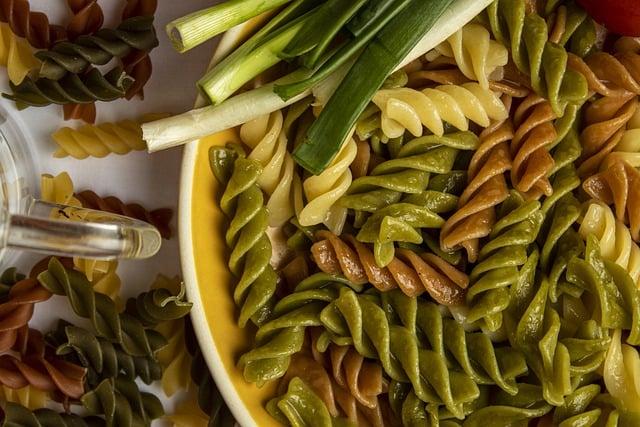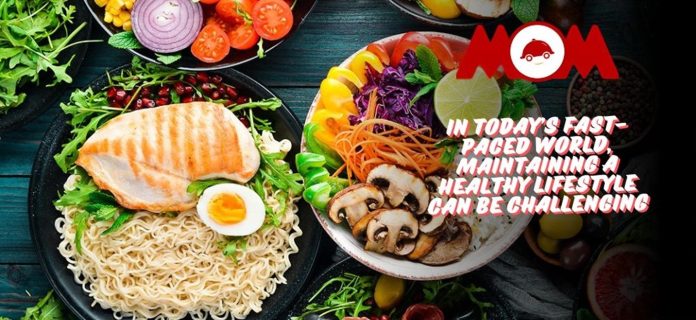In a world where culinary delights often clash with dietary goals, the quest for a meal that is both nutrient-dense and low in calories can feel like searching for a unicorn in a bustling city. Yet, imagine a plate where vibrant colors dance in harmony, flavors burst with every bite, and each morsel nourishes your body without tipping the scales. Welcome to the art of crafting meals that are as kind to your waistline as they are to your well-being. With a dash of creativity and a sprinkle of knowledge, you can transform everyday ingredients into a symphony of taste and health. Join us on this optimistic journey, where we unveil the secrets to building meals that fuel your life and ignite your taste buds, all while keeping calorie counts in check. Prepare to savor the joy of eating well without compromise!
Crafting a Symphony of Flavors: Choosing Ingredients Wisely
Embarking on the journey of crafting a nutrient-dense meal begins with the artful selection of ingredients that not only tantalize your taste buds but also nourish your body. The secret lies in choosing foods that are rich in essential nutrients yet low in calories, transforming your meal into a symphony of flavors and health benefits. Imagine a plate adorned with vibrant colors and diverse textures, each element playing its unique note in this culinary orchestra.
Consider incorporating a variety of colorful vegetables, like spinach, bell peppers, and carrots, to provide a wide range of vitamins and minerals. Add lean proteins such as chicken breast, tofu, or legumes, ensuring that your meal is satisfying and balanced. Don’t forget the power of whole grains like quinoa or brown rice, which offer fiber and complex carbohydrates to keep your energy levels steady. Lastly, sprinkle in some healthy fats from sources like avocado, nuts, or olive oil to enhance flavors and support overall well-being. Together, these ingredients create a dish that’s not only low in calories but also brimming with life-giving nutrients.
- Colorful Vegetables: Spinach, bell peppers, carrots
- Lean Proteins: Chicken breast, tofu, legumes
- Whole Grains: Quinoa, brown rice
- Healthy Fats: Avocado, nuts, olive oil
Balancing Act: Portion Control for a Fulfilling Plate
Imagine a meal that satisfies your taste buds, nourishes your body, and keeps your calorie count in check. This isn’t a dream—it’s all about mastering the art of portion control. Crafting a nutrient-dense meal begins with understanding the delicate balance between quality and quantity. Instead of focusing on restrictions, envision your plate as a canvas where vibrant colors and diverse textures meet. Begin with a base of leafy greens like spinach or kale, which provide an abundance of vitamins and minerals while being low in calories.
Enhance your plate with a variety of lean proteins and fiber-rich carbohydrates. Consider incorporating elements such as:
- Grilled chicken or tofu for protein
- Quinoa or brown rice for a hearty, fiber-filled base
- A rainbow of roasted or raw vegetables for added crunch and flavor
Healthy fats are essential for satiety and flavor, so add a sprinkle of seeds or a drizzle of olive oil. By paying attention to portion sizes, you allow yourself to indulge in a full spectrum of flavors without overindulging in calories. This approach not only nurtures your body but also ensures every meal is a joyful, guilt-free experience.
A Palette of Colors: The Art of Nutrient Diversity
In the vibrant world of nutrition, the key to building a meal that is both nutrient-dense and low in calories lies in embracing a wide array of colorful ingredients. Each hue on your plate represents a unique set of nutrients that contribute to your overall health. Leafy greens like spinach and kale are rich in vitamins A, C, and K, while bright red tomatoes bring a boost of lycopene and vitamin C. Orange carrots and sweet potatoes provide a generous dose of beta-carotene, and purple cabbage adds a splash of anthocyanins. By mixing these colors, you not only create a visually appealing meal but also ensure a broad spectrum of nutrients.
- Greens: Spinach, kale, broccoli, Brussels sprouts
- Reds: Tomatoes, red peppers, radishes
- Oranges: Carrots, sweet potatoes, pumpkins
- Purples: Eggplants, purple cabbage, beets
- Yellows: Yellow peppers, corn, summer squash
By weaving together this vibrant tapestry of colors, your meals will not only captivate the senses but also provide a nourishing feast that supports a healthy, balanced lifestyle.
Mindful Seasoning: Enhancing Taste without Extra Calories
Creating a flavorful, nutrient-rich meal without adding extra calories is an art that can transform your culinary experience. By focusing on natural seasonings, you can amplify the taste of your dishes while keeping them light and healthy. Here are some tips to elevate your meals:
- Herbs and Spices: Use fresh herbs like basil, cilantro, and parsley to add vibrant flavors. Spices such as cumin, turmeric, and smoked paprika can bring warmth and depth without the need for heavy sauces.
- Citrus Zest: Grating the zest of lemons, limes, or oranges can introduce a zesty brightness to your dishes, enhancing flavors without adding calories.
- Vinegars and Mustards: Balsamic vinegar, apple cider vinegar, and different types of mustard can offer tangy complexity. They are perfect for dressings, marinades, or as finishing touches.
By thoughtfully choosing these natural enhancers, you can build a meal that’s not only delicious but also mindful of your health goals. Let your taste buds explore a world of possibilities where every bite is both satisfying and nourishing.



